Royal orchids: habitat, species and cultivation
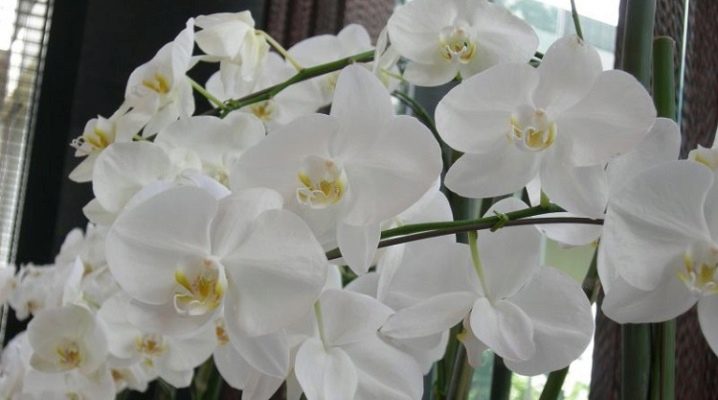
Ornamental flowering crops have always enjoyed increased popularity among flower growers. The category of such popular plants should include the royal orchid, which is presented in a wide variety of colors. In addition, it is quite possible to grow a large-flowered variety of Phalaenopsis at home, even with minimal experience in floriculture.
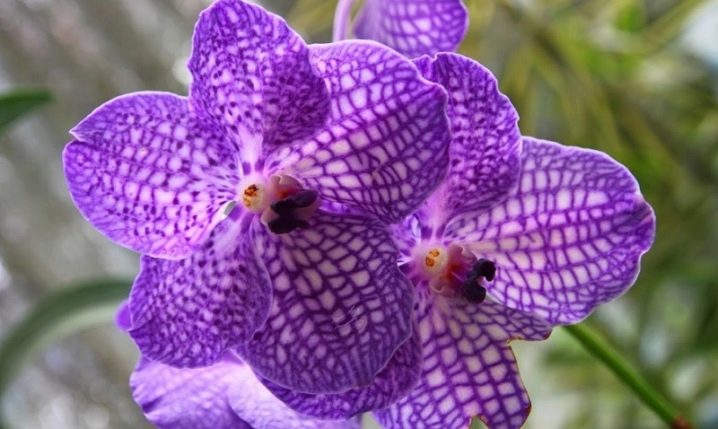
Natural habitat
Varieties of orchid crops grow all over the globe with the exception of Antarctica, however, not all plants of this genus are capable of repeated and beautiful flowering. The category of flowering crops should be attributed phalaenopsis... It was these plants that gradually migrated from their natural habitat to greenhouses, botanical gardens and to the windowsills of apartments and houses.

Today it is rather difficult to name the exact number of hybrids growing in the natural environment and indoors. As a rule, they differ in appearance and flowering possibilities. To plants that bloom in large flowers, refers to the royal phalaenopsis. Flowering stems of such an orchid in nature can be found in the tropical forests of China, India and Australia. The climatic conditions of these regions are the most suitable for the development and flowering of giant crops.
Plants prefer to grow on the bark of trees, in the crevices of stones, orchids also thrive in forests and near water bodies and rivers, where there will be an appropriate level of humidity and good lighting, without direct sunlight on the crop. Large orchids are distinguished by an impressive stem, which is the main external feature of this type of epiphytes.
At home, the dimensions will be somewhat smaller.
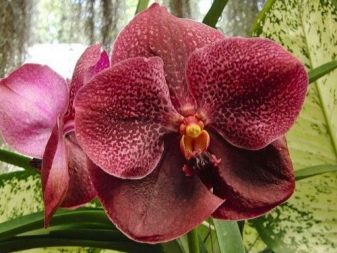
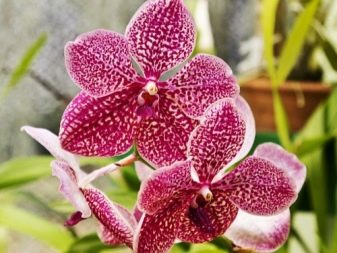
Views
Today, thanks to the efforts of breeders, many varieties of large royal orchids have been obtained. The following are especially popular.
- Blue phalaenopsis... The plant stands out for the unusually beautiful color of its flowers. Sky blue flowers are formed on the culture in a cascade, the flowering phase is quite long.
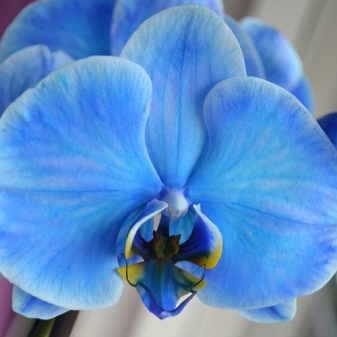
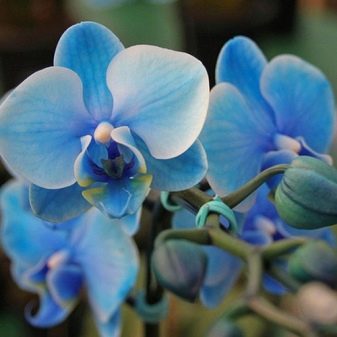
- Royal pink phalaenopsis... The hybrid is related to Japanese derivatives. The popularity of the variety is due to the pale pink color of the flowers.
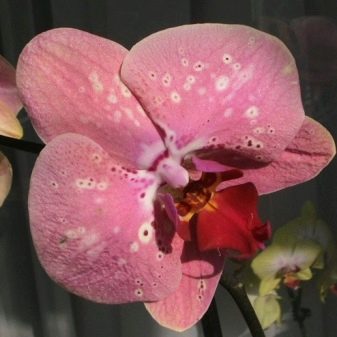

- "Aphrodite Royal"... Transgenic hybrid with blue flowers, which was obtained not so long ago by Asian breeders.
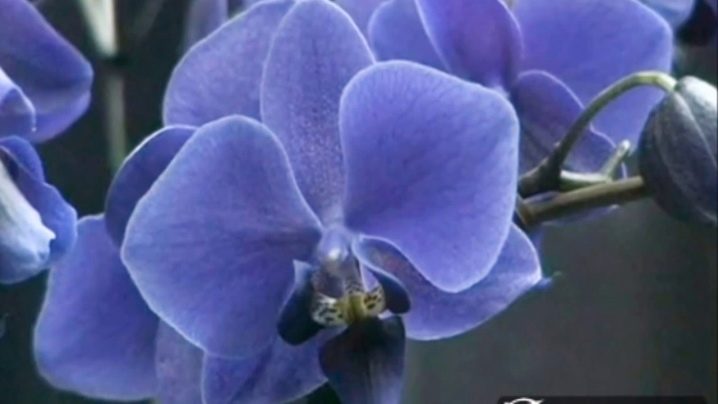
- Royal Orchid "Cascade"... The species is notable for the direction of growth of the peduncle on the crop. As a result of increasing its length, you can create whole living arches or rings from blossoming buds.
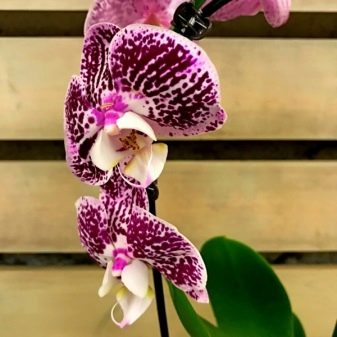
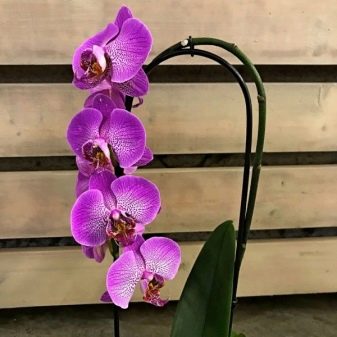
- "Wanda tricolor". This culture at home can reach a height of two meters. The plant blooms twice a year, the peculiarity of the orchid is the aroma from flowers in the flowering phase.

- "Wanda Valkovataya"... Phalaenopsis has a fairly large root system with leaves, the length of which can reach 20 centimeters. The color of the flowers is pink, the middle part will be purple, and the side petals will be yellow, with splashes and stripes.
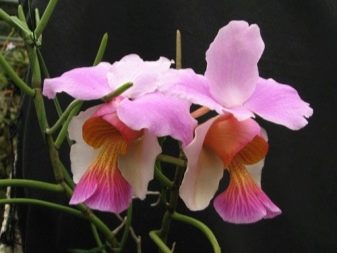
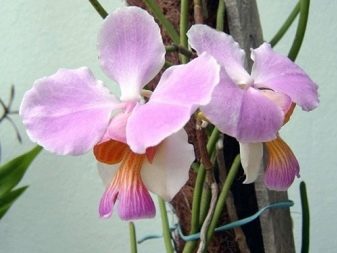
Among the types of royal orchids that are in demand for cultivation in closed conditions, it is also worth noting such plants as "Gigantea Alba", positioned as the largest orchid in the world, and interspecific hybrid "Ascocenda".

Landing
The royal orchid is difficult to adapt to new conditions after transplantation, in light of which it will be more correct to carry out this manipulation with the plant only in extreme cases. This concerns the overgrowth of the root system when the old pot becomes too small for the phalaenopsis. Also the need for a transplant may arise when a root disease is detected.
There are certain recommendations regarding the selection of a suitable soil for a tropical flower. First of all, it should not interfere with the flow of air to the root system, as well as retain the moisture entering during watering. The most suitable option would be chopped coniferous bark and sphagnum moss... For productive development in a pot with a flowering crop, it is worth including charcoal, expanded clay and sand.
In specialized gardening departments, you can buy a ready-made substrate for phalaenopsis, however, when buying, you should pay attention to its shelf life and storage conditions.
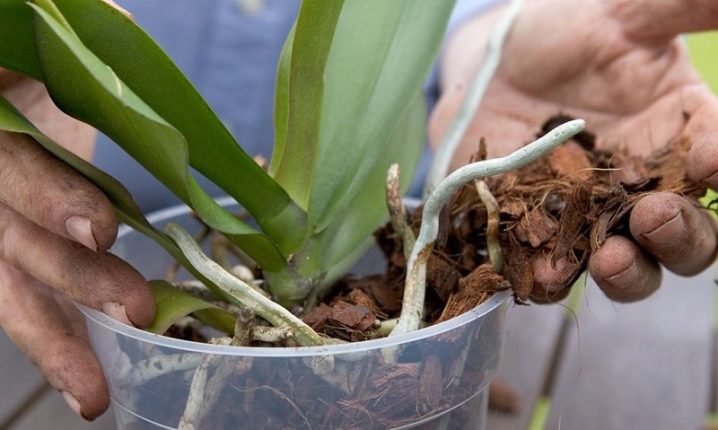
Also among gardeners there is an opinion that the royal orchid in indoor conditions and in the natural environment will not need soil at all. Therefore, you can find a culture that will grow in a plastic basket or attached to a piece of tree bark. In the course of this development, the plant will receive moisture and substances necessary for life from the air.
If the method of growing a flower in a pot was chosen, then the priority will be clay container or polymer container... To protect the roots, the flower is additionally placed in wicker pots or basket.
Phalaenopsis can develop in a glass container; for this purpose, a tall glass vase is purchased.
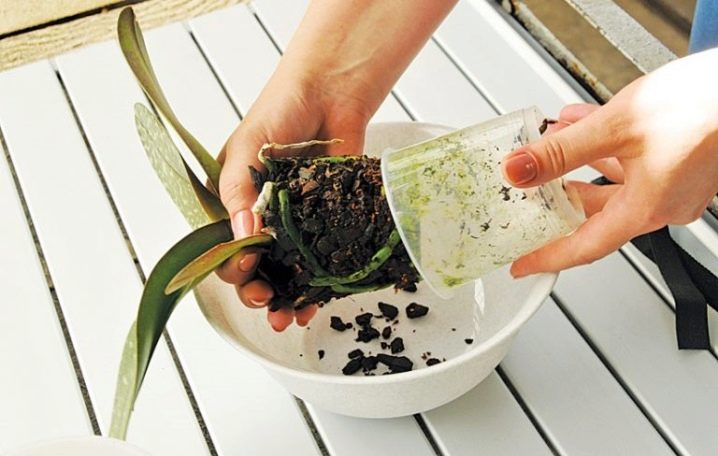
Rooting in the ground assumes the following algorithm of actions.
- To the bottom of the selected container you must first lay the drainage layer. It can be gravel or expanded clay, the layer of which should be about 2-3 centimeters.
- After that, the container is halfy is filled with a substrate. The plant is transplanted into a pot without old soil, so it should be carefully cleaned off. During cleaning, the correct solution is to inspect the root system of the crop and remove damaged roots, if any. Slices are necessarily processed with crushed coal.
- Orchid is placed in a pot, the roots in the central part are sprinkled with a large bark, the lateral ones should be straightened and covered with bark and moss of a smaller fraction.
After planting, you must refrain from watering the plant for a couple of days.
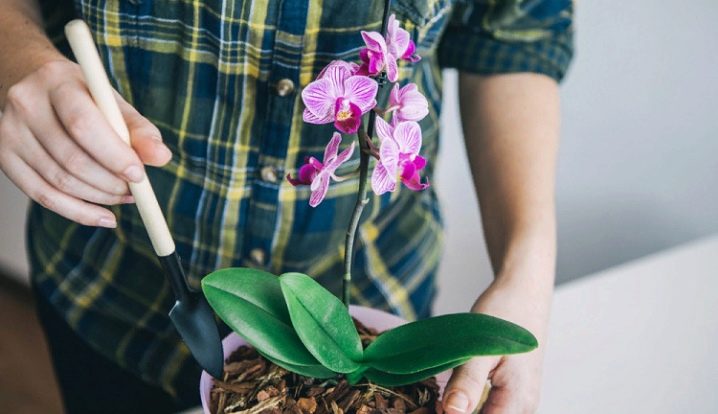
Care
The key to productive growth and flowering of the royal orchid will be the creation of the right microclimate in the room. The first priority is to ensure optimal air temperature, which should be in the range from +24 to +26 degrees. In the winter months, when the phalaenopsis is in the resting phase, the temperature will need to be lowered by 4-6 degrees.
Tropical the flower loves moisture very much, therefore, in addition to watering, the orchid should be regularly sprayed.
Watering at home can be done in several ways:
- arranging a warm shower for the culture;
- immersing the plant for a while in a pan with water;
- watering the soil with a watering can with a scattering spout;
- spraying.
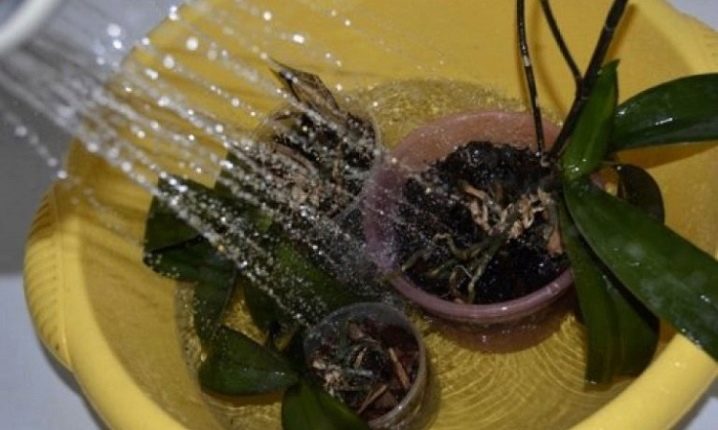
In the summer, you can bathe a flower every week.... After the shower, you need to leave the orchid in the bathroom for a while to allow all the moisture to drain. Leaves should be additionally wiped off with a rag. You can leave the flower in a tray with water for half an hour. You can determine that the plant is sufficiently saturated with moisture by the color of the roots - they will turn green.
From a watering can, an orchid can be watered every other day, using warm water for irrigation. During spraying, avoid getting too much moisture on the aerial roots. If the royal orchid is grown in a glass vase, then for watering it will be enough to pour water inside the container, leave it there for a quarter of an hour, then drain.
Lighting for the orchid should be bright, but without direct sunlight on the flower.... The best place for cultivating a tropical culture at home will be a windowsill on the southwest side. In winter, during a short daylight period, the plant can be rearranged to the south side.
In winter, phalaenopsis may need additional lighting, which can be organized using a special lamp.
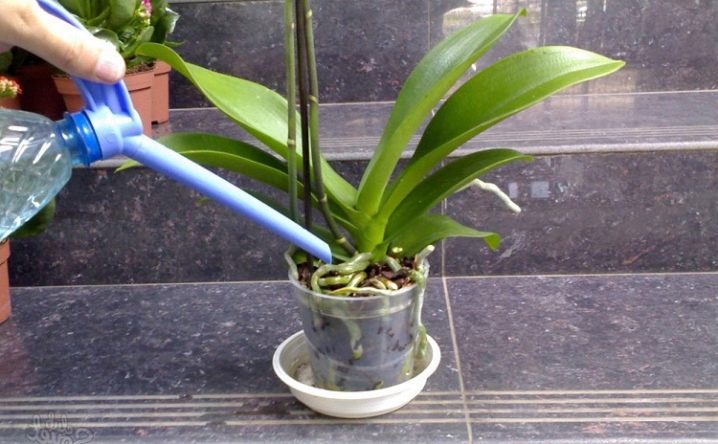
As for flowering, subject to all requirements regarding care, large-flowered the culture can bloom up to twice a year without various artificial stimulants. To provoke a crop to bloom, you can resort to the option of creating a stressful situation for the orchid. This is possible when there is a significant difference between the day and night temperature in the room. As a rule, a wobble of 10 degrees downward will suffice.
At the end of the flowering phase the orchid needs to be pruned. To do this, the shoot of the plant is shortened, as a result, only a small stump at the base remains of it. The cut site after the procedure should be treated with beeswax.
During the rest period, you need to reduce the number of waterings and reduce the air temperature in the room to + 18- + 20 degrees. In such conditions, the culture will recover faster and be able to bloom again.
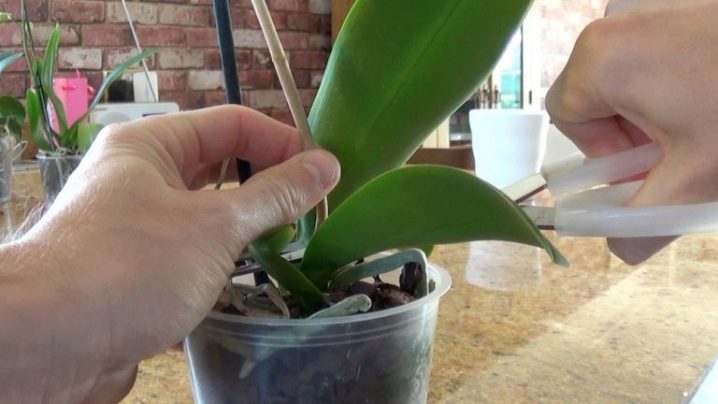
Diseases and pests
Caring for a royal orchid at home also deals with protecting against disease and pest attacks. A great danger to a tropical flower is spider mites... To destroy the pest, the culture is washed with soapy water. If this method does not bring the desired result, the flower is treated with a fungicide.
Orchids can develop a variety of fungal infections, atrophy of the trunk, heat burns and the formation of spots on the green mass. Most often, such situations arise in the course of mistakes regarding care and creating optimal conditions for the development of a flower in the room.
Today, almost all diseases are treatable. For prevention, it is worth regularly examining the culture and, if any signs of an illness are found, adjust the microclimate in the house. As for fungal infections, it will be possible to overcome the ailment by disinfecting the plant with fungicides.

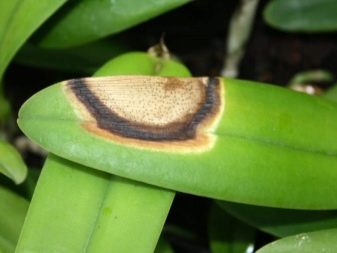
The following video will tell you how to transplant a royal orchid.































The comment was sent successfully.